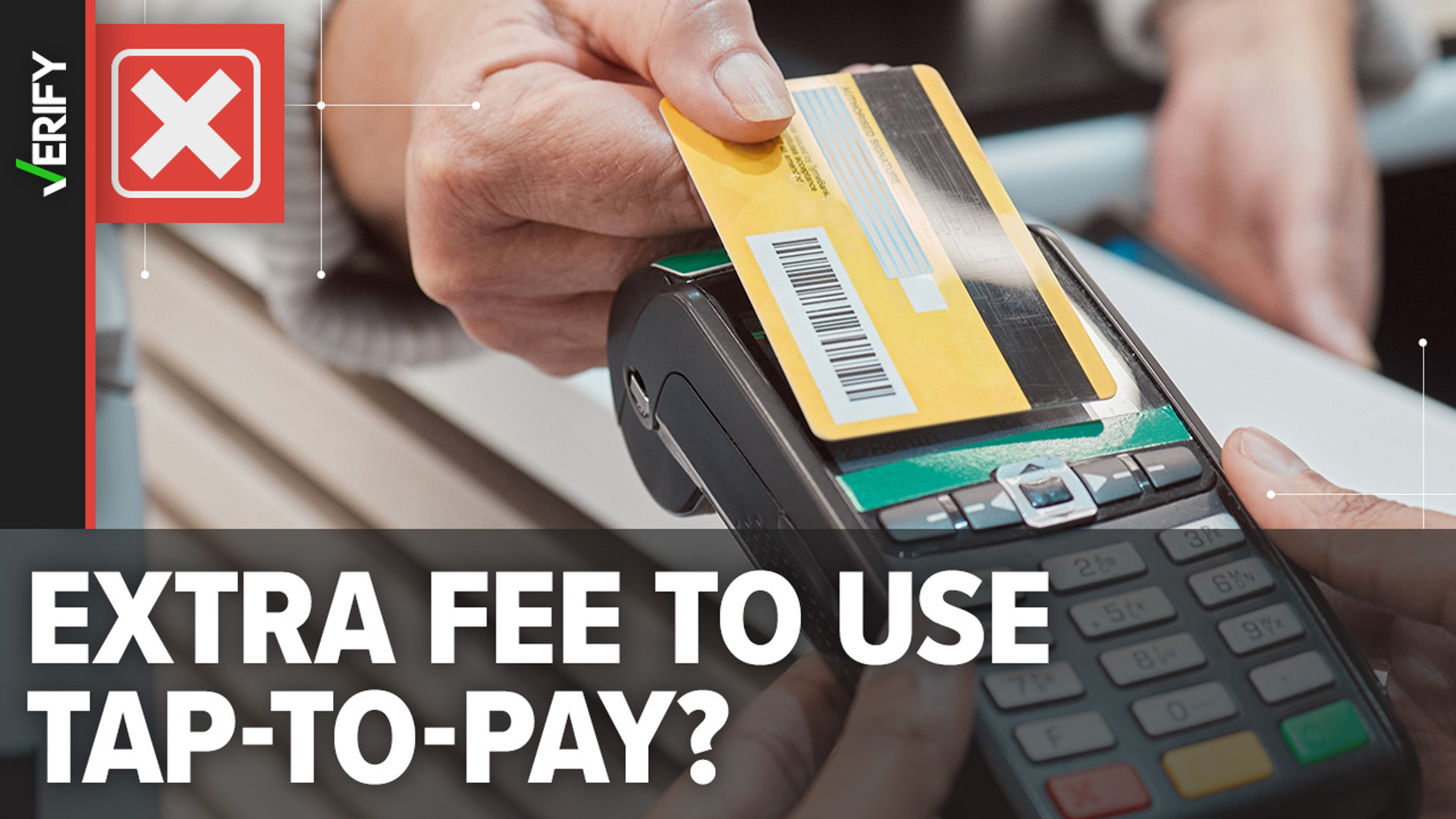Contactless payment methods, also known as tap-to-pay, have surged in usage since the start of the COVID-19 pandemic in 2020. Contactless payment methods include debit or credit cards that just require you to tap the card reader to pay and mobile payment apps that let you pay with your phone
A post with several hundred likes and comments on Threads claimed that tap-to-pay comes with additional fees that customers would not otherwise be charged if they insert or swipe their card.
THE QUESTION
Are customers charged an extra fee to use tap-to-pay?
THE SOURCES
- Wells Fargo
- Commerce Bank
- Citizens Bank
- Capital One
- National Retail Federation
- Motley Fool, an online financial guide service
THE ANSWER
No, customers are not charged an extra fee to use tap-to-pay.
WHAT WE FOUND
There’s no difference in the cost of tapping, swiping or inserting a card. Banks and card networks do not impose additional fees on customers for paying with tap-to-pay cards as opposed to swiping or inserting their cards.
Wells Fargo, Commerce Bank, Citizens Bank and Capital One explicitly state that there is no additional cost, fee or charge for using the contactless payment method over any other method of paying with their cards.
Businesses have to pay something called an interchange fee to a bank whenever they process a credit card payment. Some businesses pass this fee onto their customers either by adding a surcharge or by discounting cash payments, but the interchange fees do not change based on whether a person swipes, inserts or taps their card. In theory, a business could choose to add a higher fee for contactless but it’s not because it costs them more to process that kind of payment method.
“Banks charge merchants a fee averaging about 2.5 percent when a credit card is used to make a purchase in-person, and the fee is the same regardless of whether the card is inserted, tapped/waved, or used via a mobile device,” the National Retail Federation said in a July 2020 press release.
Interchange fees can vary based on the payment’s processing method, but tap payments are part of the same processing method as swipe and chip payments, according to Motley Fool, an online investment guide service. That means merchants are hit with the same fees for each of those payment types.
Stripe, a payment processor, says that tap-to-pay is “one of the most secure payment methods available” because they are processed in a way that does not transmit sensitive personal information.
“The contactless tap to pay method is even safer than magnetic stripe (magstripe) or chip cards, which are more susceptible to account information transfer and fraud,” Stripe says.

